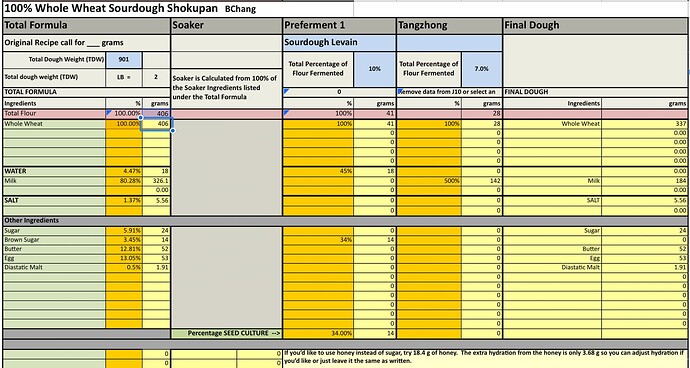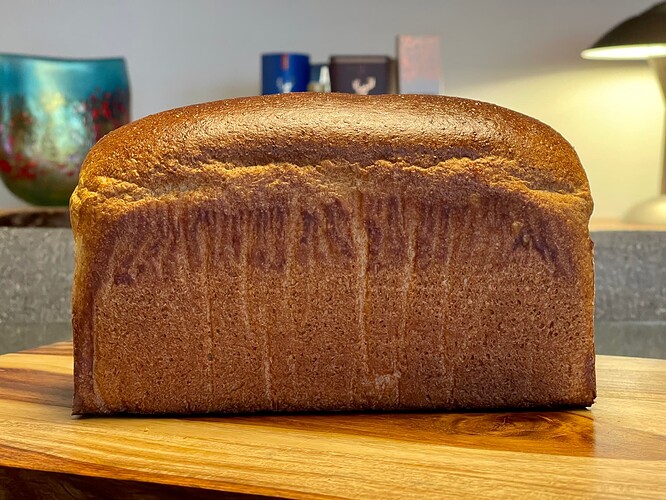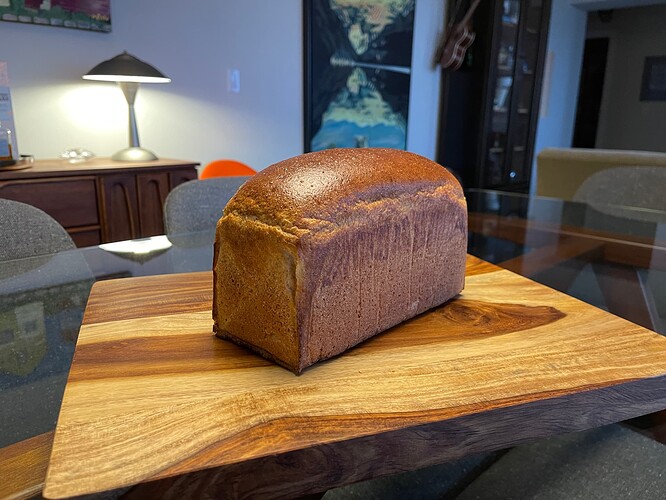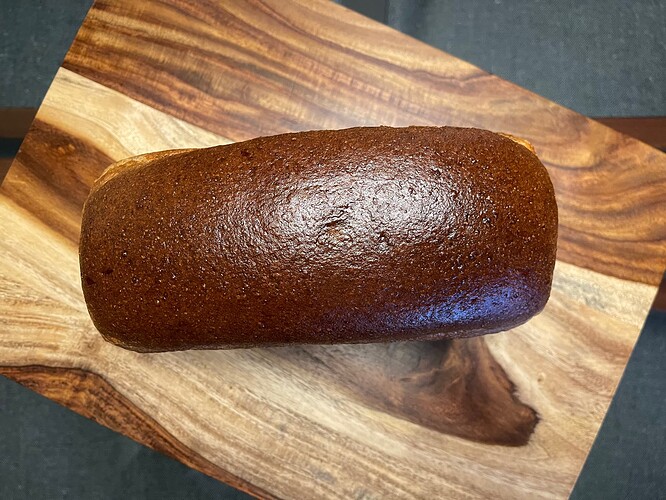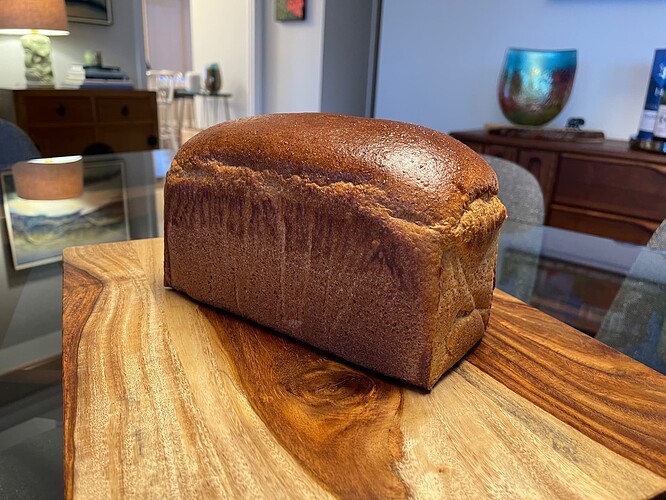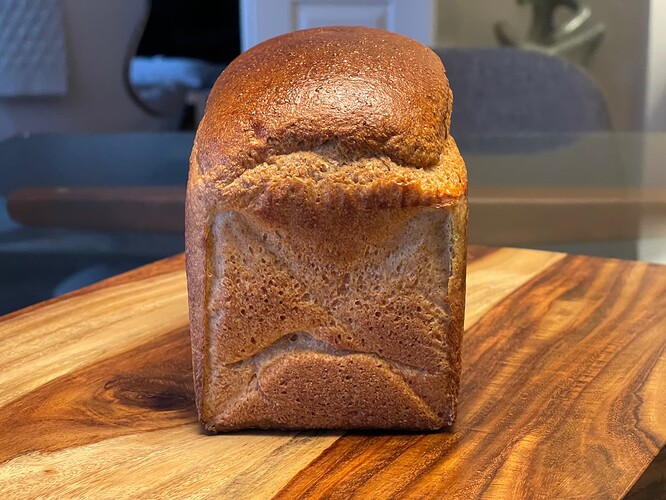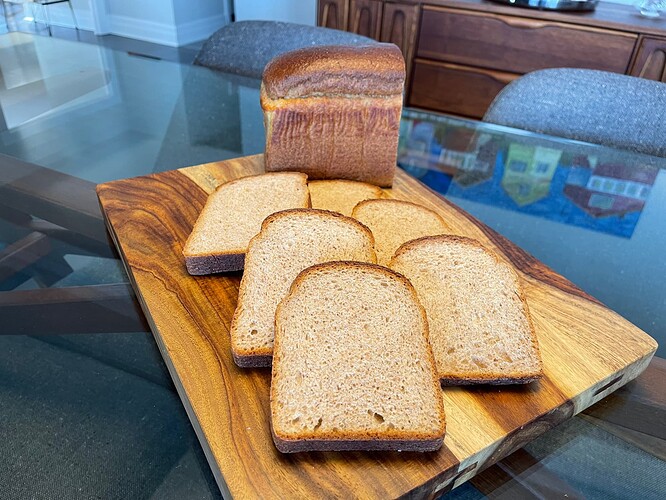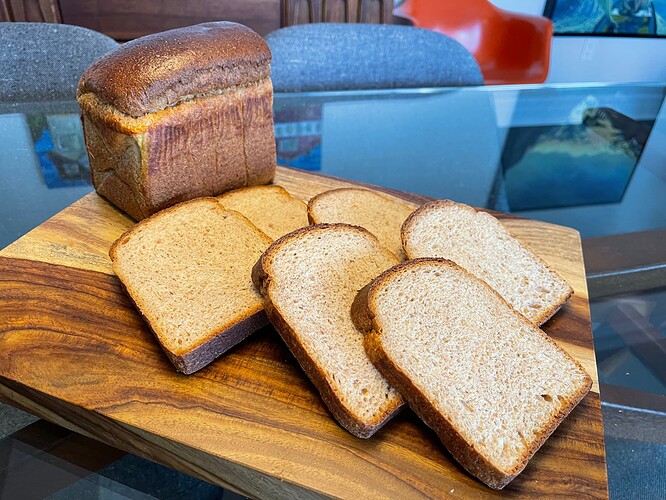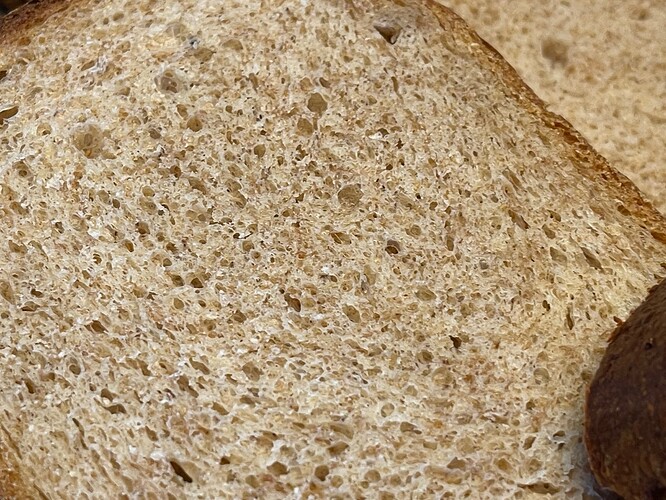I haven’t been able to definitively find out what the difference between shokupan and Hokkaido milk bread is. What I think is correct is that shokupan has less sweetness to it than Hokkaido milk bread. If that is the case then I think my recent formulas for Hokkaido milk bread with the decreased sugar probably are more like a shokupan. For this bake I wanted to know whether or not I really needed the VWG in the dough or not. I also decided that I would also shape differently for shokupans than Hokkaido milk breads to further differentiate them by look.
For 9 x 4 x 4” pullman pan
Overnight Stiff Sweet Levain fermented at 76-78°F
14 g starter + 14 g brown sugar + 18 g water + 41 g whole wheat
Tangzhong prepared the night before and refrigerated
28 g whole wheat + 142 g milk
Final Dough
184 g milk + 1 large egg (53 g) + 24 g sugar + 5.56 g salt + all Tangzhong
- all Stiff Sweet Levain + 337 g whole wheat flour + 1.91 g diastatic malt
- 52 g butter
Pre-bake Wash
• 1 egg beaten
• 1 Tbsp milk
Post-bake Wash
• 1 Tbsp butter (optional)
Instructions
Levain
Mix the levain ingredients in a jar or pyrex container with space for at least 300% growth.
Press down with your knuckles or silicone spatula to create a uniform surface and to push out air.
At a temperature of 76ºF, it typically takes up to 10-12 hours for this sweet stiff levain to be at peak. For my starter I typically see 3-3.5 times increase in size at peak. The levain will smell sweet with only a mild tang.
Tangzhong
In a sauce pan set on medium heat, stir the milk and flour until blended. Then cook for several minutes until well thickened, stirring regularly with a spoon or heat-resistant spatula. Let cool in the pan or, for faster results, in a new bowl. Theoretically it should reach 65ºC (149ºF) but I don’t find I need to measure the temperature as the tangzhong gelatinizes at this temperature. You can prepare this the night before and refrigerate it, ensure that it is covered to prevent it from drying out.
Dough
In the bowl of a stand mixer, add the milk (consider holding back 10 g of milk and adding later if this is the first time you’re making this), egg, tangzhong, salt, sugar, diastatic malt and levain. Mix and then break up the levain into many smaller pieces. Next add the flour and vital wheat gluten. I like to use my spatula to mix until there aren’t many dry areas. Allow the flour to hydrate (fermentolyse) for 20-30 minutes. Mix on low speed and then medium speed until moderate gluten development this may take 5-10 mins. Next drizzle in the melted butter a little at a time, or alternatively add room temperature butter one pat at a time. Slow the mixer down to avoid splashing the butter at you. The dough may come apart, be patient, continue to mix until it comes together before drizzling or adding in more butter. Once all the butter has been added and incorporated increase the speed gradually to medium. Mix at medium until the gluten is well developed, approximately 10 mins. You can consider resting the dough intermittently during this time You should be able to pull a good windowpane, not quite as good as a white flour because the bran will interrupt the windowpane somewhat. This is a good time to add inclusions such as my favorite black sesame seeds, that way they do not interfere with the gluten development. If you add inclusions mix until they are well incorporated in the dough.
On the counter, shape the dough into a tight ball, cover in the bowl and ferment for 2.5-3.5 hours at 82ºF. There may be some rise visible at this stage.
You can next place the dough into the fridge to chill the dough for about 1.5 hours, this makes rolling the dough easier to shape. Remember, if you do so the final proof will take longer. Alternatively, you can do a cold retard in the fridge overnight, however, you may find that this increases the tang in your bread.
Prepare your pans by greasing them or line with parchment paper.
Lightly flour the top of the dough. Scrape the dough out onto a clean counter top. Roll the dough out into a large rectangle. We do want to degas the dough as this point as this will give us a finer crumb. You will then do a letter fold of the dough and then roll it up into a boule shape to fit into your pan.
Cover and let proof for 6-8 hours at a warm temperature. I proof at 82°F. You will need longer than 6-8 hours if you chilled your dough for shaping. I proof until the top of the dough comes to within 1 cm of the top edge of the pan.
Preheat the oven to 350F and brush the dough with the egg-milk wash. Just prior to baking brush with the egg-milk wash again.
Bake the loaves for 50 minutes or until the internal temperature is at least 190ºF, rotating as needed to get even browning. Shield your loaf if it gets brown early in the baking process. After 50 mins remove the bread from the pan and bake a further 10 mins by placing the loaf directly in the oven on the rack with the oven turned down to 325ºF. You can brush the top of the loaf with butter if you wish at this point while the bread is still hot to keep the top crust soft.
